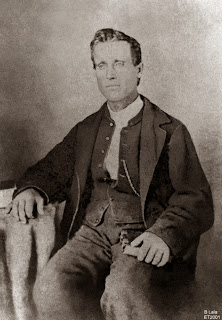Pioneers
Joseph Plateau
14 October 1801 – 15 September 1883
Plateau was a Belgian physicist, (a scientist who does research in physics). He did research about the human eye and how it works and moved on to focus on the retina because it lets the eye see color. He was the first person to demonstrate the illusion of a moving image, he discovered this in 1832 by using counter rotating disks with repeated drawn images on, he called this a phenakistoscope.

Plateau had inspirations from other inventor’s work from Michael Faraday and Peter Mark Roget who were also involved with physics. Faraday helped the input of electromagnetic induction and Roget discovered that images were retained by the retina of the human eye for fractions of a second before being replaced by the succeeding ones.
William Horner
1786 – 22 September 1837
The zoetrope works on the same basis as the phenakistoscope, but the pictures are drawn on the bottom third of a metal drum and the top third had slits cut into it which the viewer looked through as it was spun on a spindle. The quicker it was spun the smoother the images would look.
Emile Reynaud
8 December 1844 - 9 January 1918
Reynaud is one of the pioneers of the cinema and the inventor of the optical theatre. He is the creator of the first animated cartoons and the praxinoscope. When he worked in repair, he began to assemble and develop optical and physics instruments before going on to do photography in Paris. In 1876 he developed his optical toy, the praxinoscope which year later he then went to take to the market. This was an animation device which consists of using a strip of pictures placed around the inner surface of a spinning cylinder but instead of of using small slits like the zoetrope, it used an inner circle of mirrors positioned so that the images looked a lot less stationary and gave a clearer motion than the zoetrope.
He continued to develop his work and and eventually created the praxinoscope-theatre which then evolved into the projection-praxinoscope, which is a projection on screen, but however the machines only allowed 12 frames which showed in a cyclical movement. In 1888 the optical theatre was created and screened short cartoons to over 500,000 people over 8 years.
Eadweard Muybridge
1830-1904
Muybridge was a British photographer and became known for creating world-famous images of animals and humans in motion. He laid the foundation of motion cinema with his "The Horse in Motion" study in 1882. He aligned 50 cameras along a horse race track, which each had a specially designed rapid shutter which were connected to trip wires so that a picture was taken every time a horse passed by it. This also added to his achievements as he was the first to discover that when a horse gallops, it becomes airborne.The series of images were projected at a rapid pace to recreate the horse galloping.

Muybridge then invented the zoopraxiscope. This was the idea that images that were painted on rotating glass disks and silhouettes and projected out in rapid succession to give the impression of motion. This idea was then developed by Thomas Edison after he attended a lecture by Muybride on the zoopraxiscope. The pair then met up and they discussed combining ideas to create that would play sound and images concurrently. In 1889 Edison proposed the motion picture device and called it the Kinetoscope, "kineto-" meaning movement and "scopos-" to view. This was a box device that allowed people to watch the moving image through a peep hole into the box.
Muybridge then invented the zoopraxiscope. This was the idea that images that were painted on rotating glass disks and silhouettes and projected out in rapid succession to give the impression of motion. This idea was then developed by Thomas Edison after he attended a lecture by Muybride on the zoopraxiscope. The pair then met up and they discussed combining ideas to create that would play sound and images concurrently. In 1889 Edison proposed the motion picture device and called it the Kinetoscope, "kineto-" meaning movement and "scopos-" to view. This was a box device that allowed people to watch the moving image through a peep hole into the box.
Lumiere brothers
1862 - 1954 & 1864 - 1948
Their first ever film they created was in February 1934 of workers leaving the Lumiere factory which was publicly screened in Paris in 1895 and consisted of 9 other films. Each film created a 17 meter long string of images which each ran approximately 50 seconds when hand cracked through the projector.
They eventually started on colour photography and in 1903 the created a colour photograpraphy process which was launched for the public to buy in 1907.
George Pal
1908 - 1980
made a film advertisement in Prague advertising cigarettes which then lead to him being hired by Philips to make a further two adverts. By 1939 he had made five more films for Horlicks Malted Milk and then the next year emigrated to the USA where he worked for Paramount Pictures. Pal created plently of Puppetoons for Paramount and so he began to feature films starting with "Desitnation Moon" in 1949. The film was a success with the public and critics and won an Academy Award for special effects.


No comments:
Post a Comment